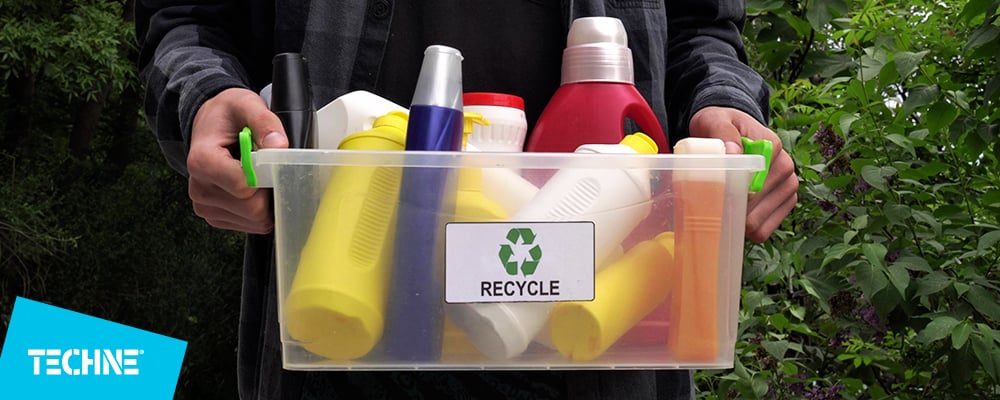If we talk about modern manufacturing, the pursuit of sustainable and responsible practices has become a cornerstone for industry leaders. For machine blow molding companies, the adoption of eco-friendly approaches is not only a commitment to environmental stewardship but also a strategic choice that brings forth a myriad of advantages.
This article delves into the compelling benefits of recycling High-Density Polyethylene (HDPE) bottles. As we explore the various facets of HDPE bottle recycling, it becomes evident that these practices align seamlessly with the core values and objectives of machine blow molding companies, ushering in a new era of conscientious manufacturing.
Understanding HDPE bottles
High-Density Polyethylene, commonly known as HDPE, is a versatile and widely used plastic material. HDPE bottles, in particular, are prevalent in packaging due to their excellent strength, durability, and chemical resistance. These bottles are commonly used for packaging various products, including beverages, household cleaners, and personal care items.
HDPE is a type of plastic known for its recyclability, making it an environmentally friendly choice for packaging. Additionally, HDPE's resilience to heat and chemicals ensures that it can be effectively cleaned and reprocessed for reuse.
Recycling HDPE bottles plays a crucial role in reducing the environmental impact of plastic waste. By diverting HDPE from landfills and incineration, we mitigate the release of harmful pollutants and greenhouse gases, conserving valuable resources, as it reduces the demand for new raw materials and the energy required for manufacturing.
- Energy savings: The recycling process for HDPE bottles consumes significantly less energy compared to the production of new plastic. This results in lower carbon emissions and contributes to overall energy conservation.
- Circular economy: HDPE recycling is a key element of the circular economy, where materials are continuously reused, reducing the need for virgin resources. Embracing a circular approach to plastic use helps minimize waste and fosters a more sustainable system where materials are recycled, remanufactured, and reintegrated into the production cycle.
Recycling process
Recycling HDPE bottles involves a series of well-defined steps that contribute to the sustainable utilization of this versatile plastic material.
Steps in recycling HDPE bottles
1- Collection: The recycling process begins with the collection of used HDPE bottles. Collection points, recycling bins, and waste management systems play a crucial role in gathering these materials.
2. Sorting: Once collected, the HDPE bottles undergo a sorting process. This step is essential to separate HDPE from other plastic types and materials, ensuring a more efficient and focused recycling process.
3. Cleaning: After sorting, the HDPE bottles are thoroughly cleaned to remove any contaminants, labels, or residual contents. Proper cleaning is vital to maintain the quality of the recycled material.
4. Shredding: The cleaned HDPE bottles are then mechanically shredded into smaller pieces. Shredding increases the surface area, facilitating the subsequent melting and remolding processes.
5. Melting: The shredded HDPE undergoes a melting process. The melted plastic is then formed into pellets or other convenient forms, ready for reuse in the manufacturing process.
6. Remolding: The melted and purified HDPE is used in various applications, including the production of new bottles through processes such as machine blow molding. This stage completes the recycling loop by transforming used HDPE into new, functional products.
Challenges in HDPE bottle recycling
While HDPE bottle recycling has made significant strides, there are challenges associated with the process.
1. Contamination: Contamination of collected HDPE bottles with other plastics or non-recyclable materials can impede the recycling process.
2. Color variability: HDPE bottles come in different colors, and certain applications require specific color grades. Sorting and recycling colored HDPE bottles pose challenges in producing high-quality, uniform recycled material.
3. Label removal: Labels on HDPE bottles can be challenging to remove completely during the cleaning process. Efficient label removal methods are necessary to enhance the purity of the recycled HDPE.
4. Consumer awareness: Increasing awareness among consumers about the importance of recycling and the proper disposal of HDPE bottles is essential. Improving consumer education can help address contamination issues and promote more responsible recycling practices.

Benefits of recycling HDPE bottles
The global production of HDPE is projected to reach 53.62 million metric tons by 2025, so recycling HDPE bottles helps conserve valuable resources, reducing the demand for new raw materials and contributing to a more sustainable production process. On the other hand, the recycling of HDPE bottles is an energy-efficient alternative, consuming less energy compared to the production of new plastic. This results in lower carbon emissions and supports eco-friendly manufacturing practices.
By diverting HDPE bottles from landfills and oceans, recycling significantly reduces plastic waste, contributing to a cleaner environment and mitigating the impact of plastic pollution.
Economic advantages
Recycling HDPE bottles leads to cost savings for manufacturers, as it lessens the reliance on expensive virgin resins, making the production process more economically efficient.
Reducing plastic pollution
Recycling HDPE bottles plays a pivotal role in reducing plastic pollution in marine environments, safeguarding aquatic ecosystems, and supporting marine conservation efforts.
As the demand for sustainable solutions continues to shape the industrial landscape, machine blow molding companies are taking significant strides towards efficiency and environmental responsibility. Embracing recycling practices for HDPE bottles is not just a commitment to reducing environmental impact, but a strategic move towards greater efficiency in manufacturing processes.
As the industry continues to evolve, it's clear that the constructive collaboration between machine blow molding and eco-conscious practices will play a pivotal role in shaping a manufacturing landscape that is not only efficient but also environmentally responsible.
Explore packaging possibilities for a diverse range of products. Connect with us, and together, we'll identify the ideal EBM machine tailored to enhance your company's packaging efficiency, utilizing recycled plastics for a more sustainable and eco-friendly approach.












Leave a comment